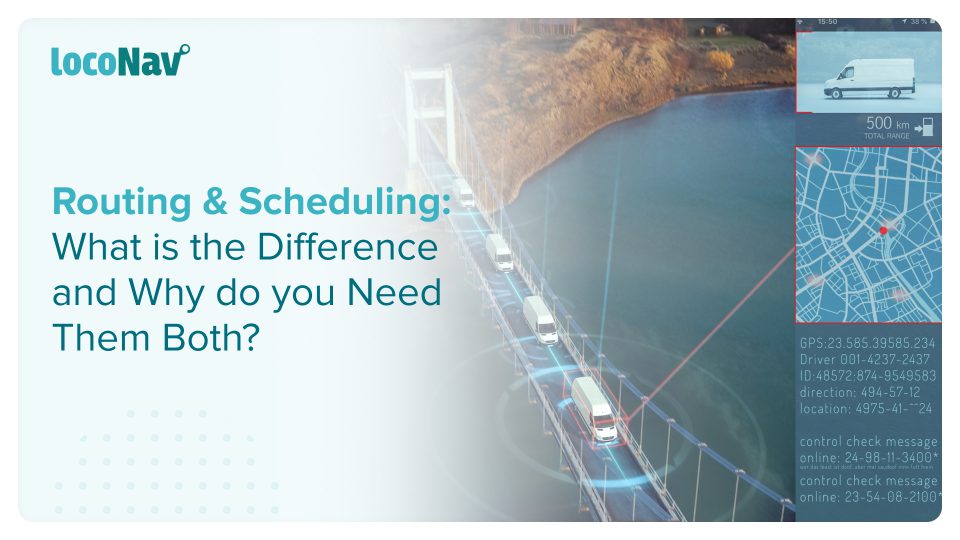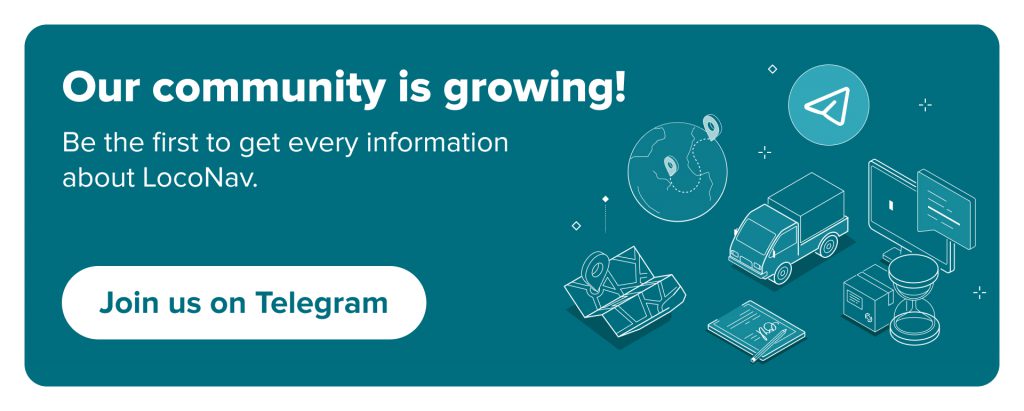

If you oversee delivery operations or a dynamic workforce of service or maintenance technicians, you are probably already using some form of routing and scheduling. You may be manually charting it out or using a software. However, understanding the difference between routing and scheduling and their distinct advantages can help you become more effective, expand your company’s delivery or service capabilities, and generate significantly more revenue.
Attempting to execute routing and scheduling without first comprehending their respective purposes is like eating a bowl of soup with chopsticks. In this blog, we will explain what routing and scheduling are intended for, the benefits they provide, and why you need them both.
What is Routing?
The method of taking your delivery schedule and charting out specific (and optimal) routes for delivery drivers or service professionals is known as route planning. Route planning is used to optimise routes by considering factors such as vehicle resource limitations, travel time, and transportation costs, whereas scheduling is used to optimise workloads and workforce availability.
Manage your fleet efficiently with LocoNav’s Fleet Management Solutions!
Why is Routing Important in Fleet Vehicles?
With every business seeking a competitive advantage, the supply chain industry requires innovative technology. This technology must be able to automate logistics from start to finish to save time and effort, increase productivity, and reduce human reliance. A Route Optimization software will provide you with the following advantages:
- Increased Asset Visibility
Routing can keep an eye on the delivery business in real-time, responding to customer inquiries and managing the supply chain and drivers. Dispatchers can guarantee that drivers are not exceeding speed limits or taking unnecessary breaks by using real-time GPS and maps to demonstrate the routes.
- Safe Driving
Routing can be configured to use fewer left turns or U-Turns, which are more likely to result in a mishap than straight or completed right turns. When a route is plotted ahead of time, the driver can focus on the road rather than deciding where to stop next or which detour to take to get to the destination.
- Reducing Fuel Expenses
It can help you save a significant amount of money on fuel. Fuel consumption can be reduced by driving on highways rather than city roads with frequent stops and starts, and by selecting the most efficient route using an automated system rather than guessing.
- Eliminating Human Errors
Using a routing service rather than manual route planning reduces the chances of making mistakes, especially if the route is complicated or there are numerous factors to consider. Instead, fleet managers can devote their time to resolving other issues or improving service quality in other ways.
What is Scheduling?
Scheduling entails taking orders or service requests, calculating how many employees (and vehicles) are needed to cover those orders, and appointing employees to orders during particular time windows. To execute smooth field delivery operations, scheduling is almost always required first.
How to Distinguish Routing and Scheduling?
While routing and scheduling work together to help you boost your bottom line and scale effectively, there are some differences that we have highlighted below:
Procedure
- Scheduling is the who, what, and when of the transportation process. For example, scheduling will tell you what products to deliver, when they need to be dispatched, and what driver will undertake the task.
- Routing is the how and where of the transportation process. For example, routing will take into account where you need to reach and tell you how you can effectively reach there.
Objectives
- Scheduling aims to ease the dispatch process by taking into account all available resources and assigning the appropriate vehicle and driver for the task.
- Routing on the other hand aims to reduce transit time by planning the most cost and time-efficient route.
Influencing Factors
- Scheduling is affected by the delivery date, availability of products/service professionals that need to be dispatched and vehicle and driver availability.
- Routing is a more dynamic process and is affected by delivery location, road and weather conditions, and festivals and events that may contribute to traffic congestion.
Challenges
- Challenges in scheduling include the unavailability of drivers and vehicles, not considering all tasks, priority tasks, and last-minute delivery schedule changes.
- Challenges in routing include a lack of real-time tracking, communication gaps between driver and fleet manager, and last-minute route changes.
How does Routing Software Leverage Both Routing and Scheduling?
A dynamic routing software like LocoNav harnesses the power of both routing and scheduling to offer the most fruitful solutions.
Scheduling:
- LocoNav offers its users the flexibility to create trips well in advance. These trips can be created even without assigning vehicles and vehicles can be assigned later at the end basis of availability.
- You can evaluate your vehicles and drivers on the basis of Vehicle Scorecard and Driver Scorecard analysis to assign the best resources for the job.
Routing:
- LocoNav offers dynamic routing and scheduling capabilities such as route optimization and route deviation. With route optimization, you can identify the shortest and most fuel-efficient path beforehand. To make sure your vehicles stay on the assigned route, you can turn on route deviation alerts and get instantly notified if a driver strays from the set path.
- With live alerts, you can make changes to your routes considering real-time traffic conditions. Live alerts also allow you to make sure your routing and scheduling efforts are being utilised by your drivers properly.
FAQ
What Are The Different Methods Of Routing Planning?
The different methods of route planning are:
- Dynamic Route Plan
- Multi-stop Route Plan
- Closed Path Routing
- Open Path Routing
- Reverse Open Path Routing
- Depot-to-Depot Routing
